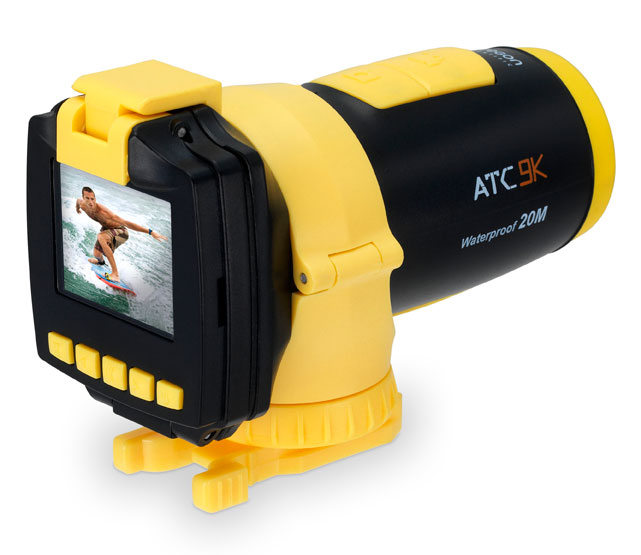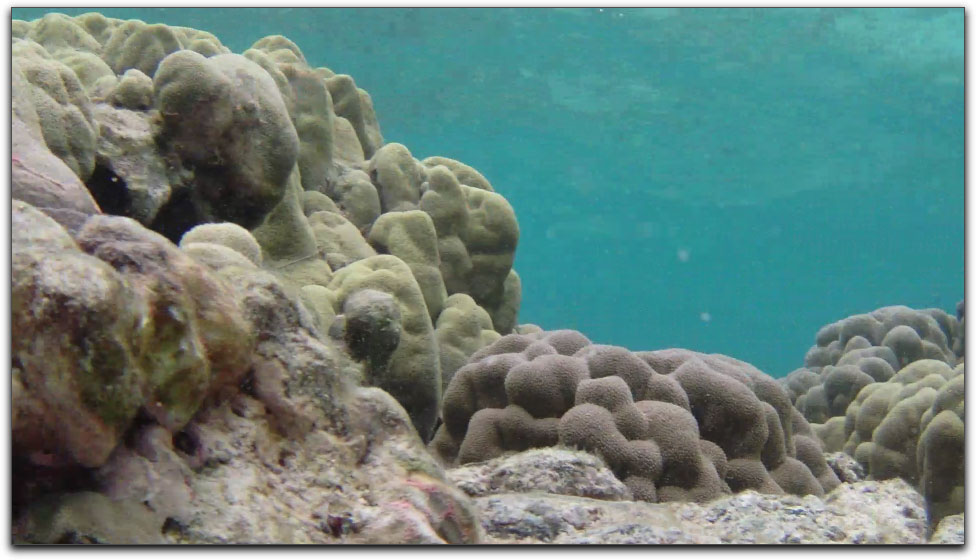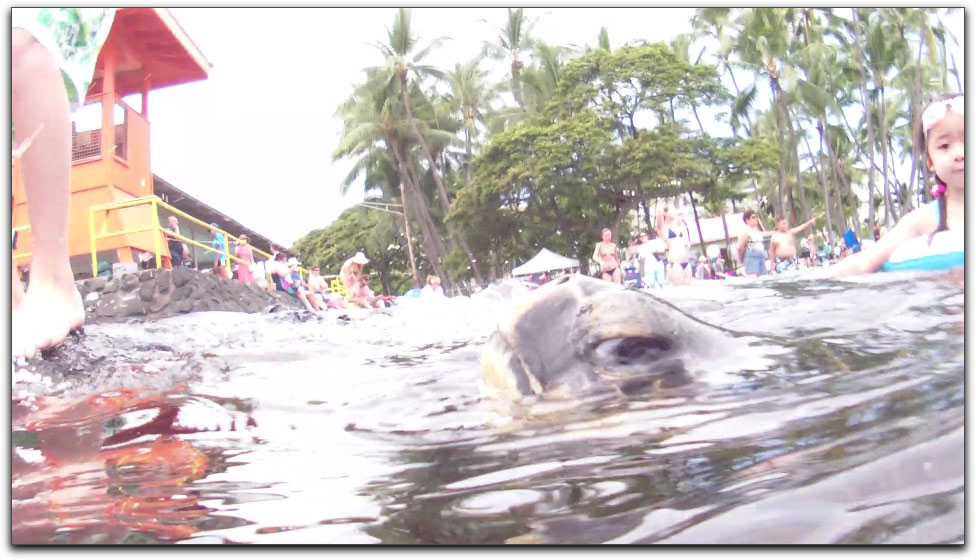
July 25, 2011
http://www.oregonscientific.com - $449.99
Review by Steve Douglas
On the heels of the latest of a series of small helmet mountable camcorders arrives the Oregon Scientific ATC9K.

Made of fairly strong plastic, the ATC9K is a handy camcorder to take out and about with you.

July 25, 2011Oregon Scientific ATC9K Camcorder
http://www.oregonscientific.com - $449.99Review by Steve Douglas
On the heels of the latest of a series of small helmet mountable camcorders arrives the Oregon Scientific ATC9K.

The ATC9K easily fits in the palm of your hand or in your pocket allowing for quick and easy access for those unexpected shooting needs as well as providing several mounts for the white water rafting or motorbiking excursions where POV footage can really come in handy. The camcorder uses a fixed focus glass lens filming at a 130° wide angle in HD1080 mode at 30fps. Additional settings allow for shooting in 720P at 30 or 60fps or in standard definition.
The Oregon Scientific ATC9K utilizes a micro SD card up 32 GB and is compatible with either PC or Macs. I found downloading the footage a simple process using MPEG Streamclip which can then transcode the H.264 Quicktime mov. files to whichever codec you are working in. A few new features separating the ATC9K from the pack is the self card-reformatting ability of camcorder as well as the small, 320x240 screen allowing you to set up your own composition.
The supplied battery is rechargeable via the supplied USB cable and takes about 2-3 hours to charge from a fully discharged state. I connected it to my laptop and it charged the ATC9K without a problem. A red LED will light up showing that the camcorder is charging and will turn itself off after a complete charge. When mounted on a car, helmet, or kayak the screen can be a real plus, but if you are hand holding the camcorder or try to use it when snorkeling, the screen is extremely difficult to see. Light, either from the sun or most any source tends to overpower the screen rendering it to a point, shoot and hope you composed it correctly.
On the back of the ATC9K are 5 different yellow buttons for setting video and photo modes, photo shooting intervals and color effects. Options for preset video durations are of 15 and 30 seconds, 1, 2, 5 or 10 minutes. Photo shooting intervals can be set for every 10,20 or 30 seconds as well as 1,2, 5 and 10 minute intervals. The buttons are easy to operate and, if the sun is not behind you, being able to see what you are doing on the screen is a huge help. Unfortunately, each plastic button has a small icon on it as well. Theses icons are the same bright yellow as the button so seeing these icons are nigh impossible. Why they didn't make the icons black to contrast with the yellow of the buttons is beyond my ken.
Supplied with the ATC9K is a small remote which enables you to operate the camcorder without having to handhold it. Due to its very light weight, handholding by anyone, even with a steady hand quickly shows even the slightest movements so a steady mount is imperative. For snorkelers, the camcorder is waterproof down to 20 meters (65 feet) which is a depth I often find myself at. I did not try to take it to depth or beyond.
A small but necessary plastic lens cover is supplied. Most camcorders of this type do not supply them and I am glad that Oregon Scientific does, however, the cover is a bit loose fitting and easily came off but it was better than nothing at all.
Color accuracy was pretty decent topside but a bit reddish at shallow depths.

I was surprised that despite the wide angle of the fixed lens, there wasn't near as much of that fish eye appearance to the footage as I normally see with camcorders of this type. However, also typical of the new wave of mini camcorders, is the slow adaption to changes in light. It takes a few moments for the cams auto exposure setting to adjust. Never the less, you can adjust the camcorder's white balance via the back buttons by selecting Auto, Daylight, Cloudy, Fluorescent and Tungsten. You can also adjust both sharpness and/or contrast to either Standard (which was the setting I conducting my tests with) Soft or Hard.

All in all, while not the most inexpensive small camcorder on the market today, the ergonomics of the cam make it desirable. Yes, they need to do something about those yellow buttons and, yes, it would be nice to have some sort of sun block for the back screen, but all in all, the camcorder produced some good footage which is any shooter's bottom line.

Steve Douglas is a certified Apple Pro for Final Cut Pro 7 and underwater videographer. A winner of the 1999 Pacific Coast Underwater Film Competition, 2003 IVIE competition, 2004 Los Angeles Underwater Photographic competition, and the prestigious 2005 International Beneath the Sea Film Competition, where he also won the Stan Waterman Award for Excellence in Underwater Videography and 'Diver of the Year', Steve was a safety diver on the feature film "The Deep Blue Sea", contributed footage to the Seaworld Park's Atlantis production, and productions for National Geographic and the History channels. Steve was a feature writer for Asian Diver Magazine and is one of the founding organizers of the San Diego UnderSea Film Exhibition. He is available for both private and group seminars for Final Cut Pro and leads underwater filming expeditions and African safaris with upcoming excursions to the Cocos Islands, Costa Rica, and Hawaii. Feel free to contact him if you are interested in joining Steve on any of these exciting trips. www.worldfilmsandtravel.com
[Top]
copyright © Steve Douglas 2011
All screen captures, images, and textual references are the property and trademark of their creators/owners/publishers.